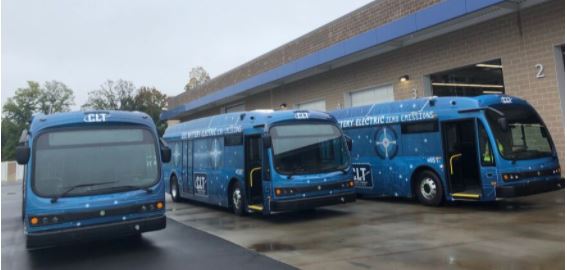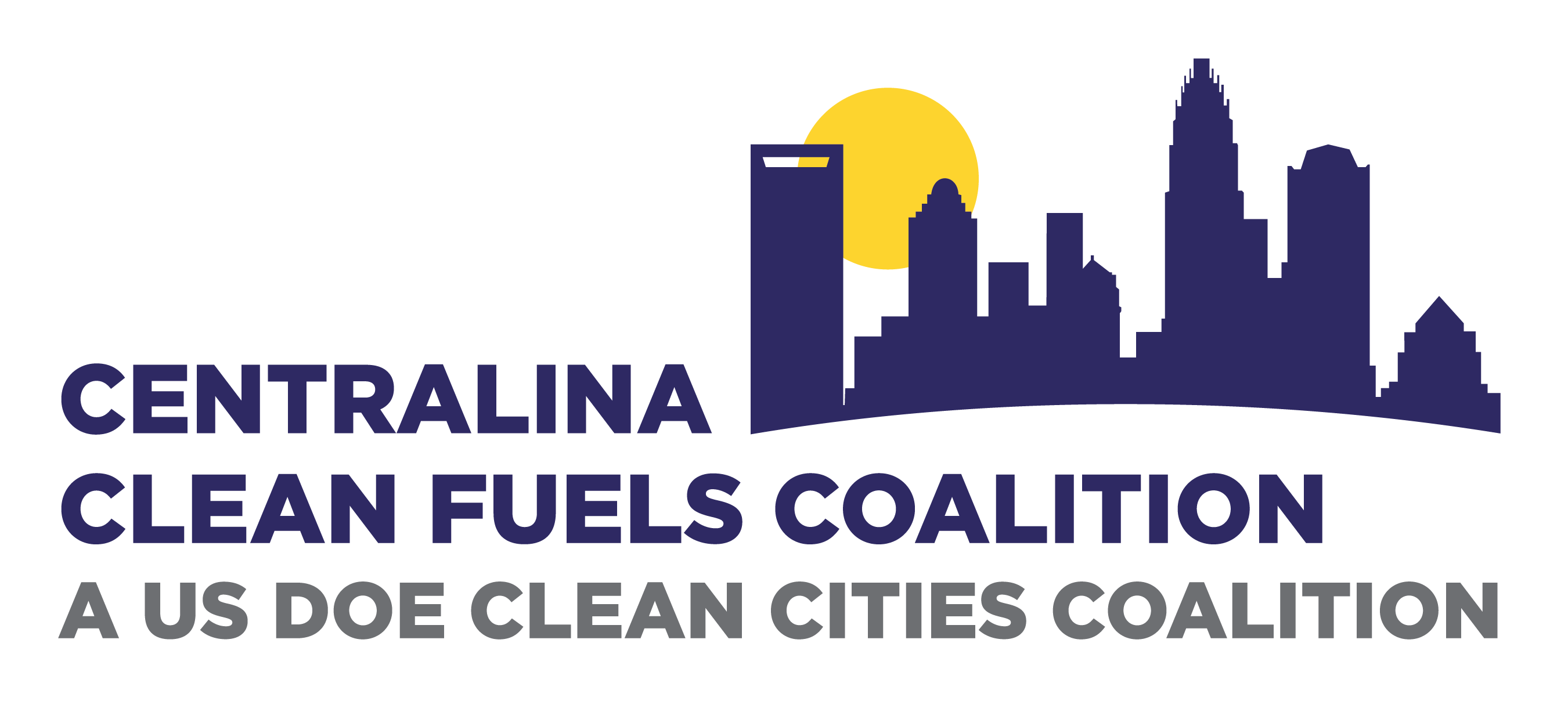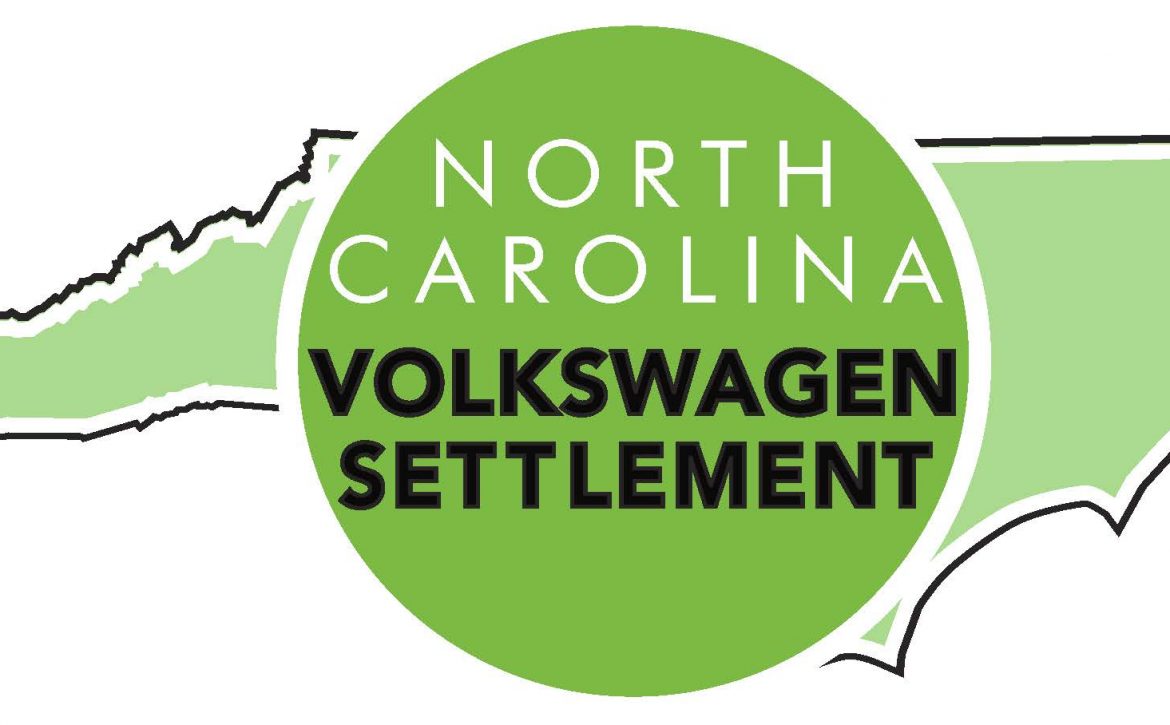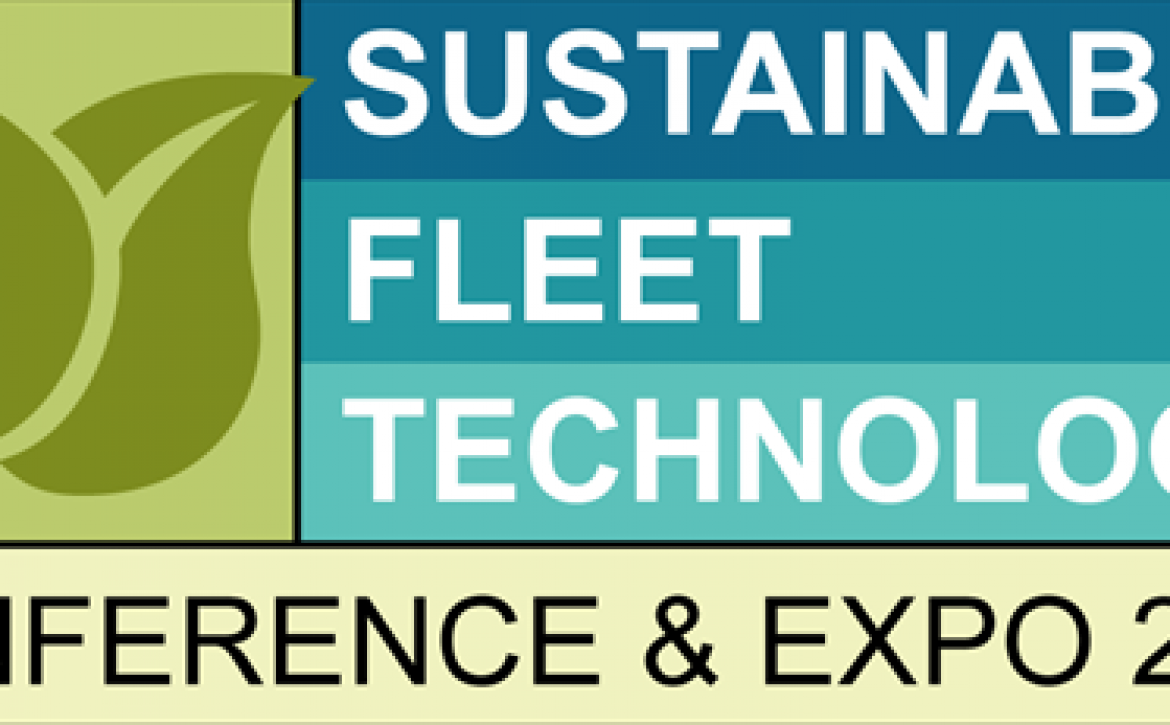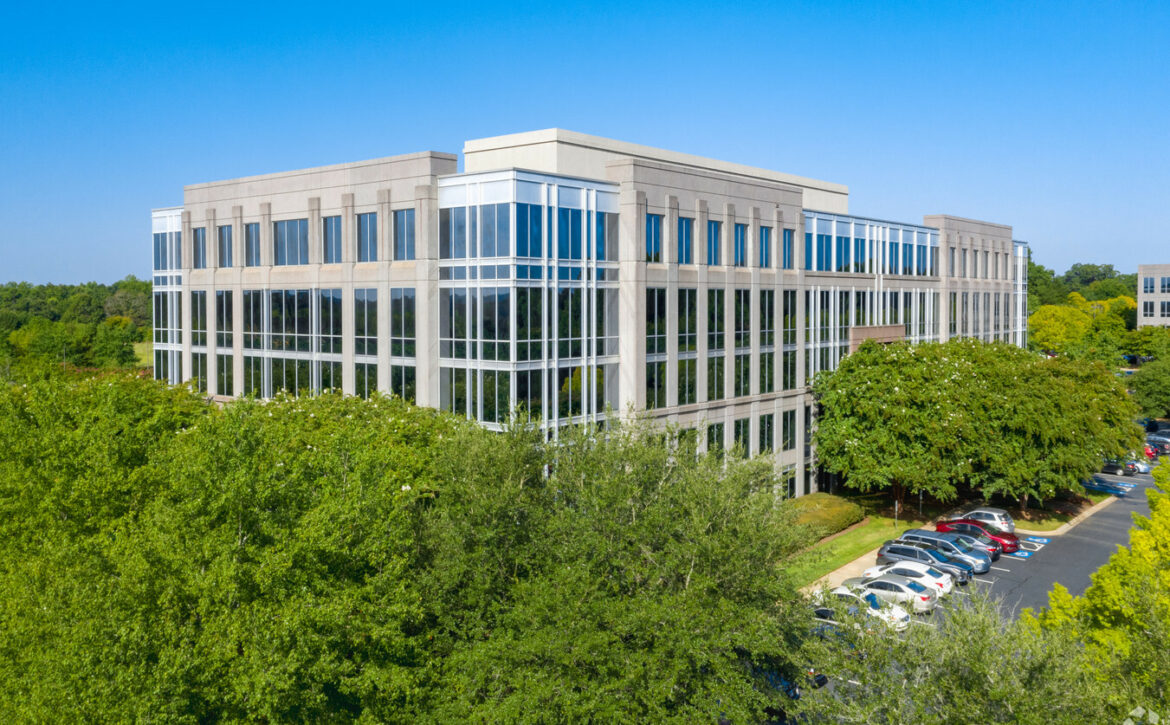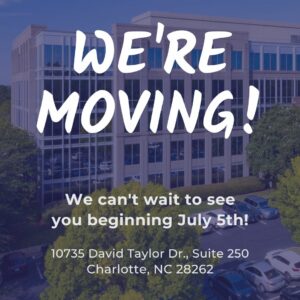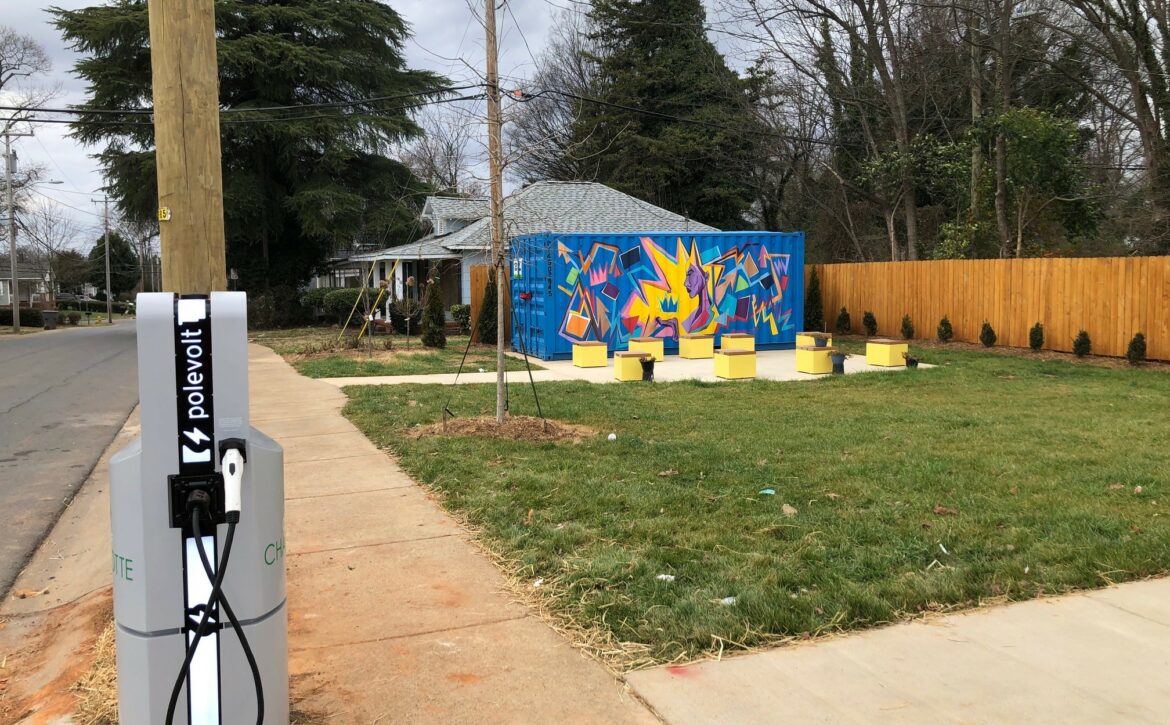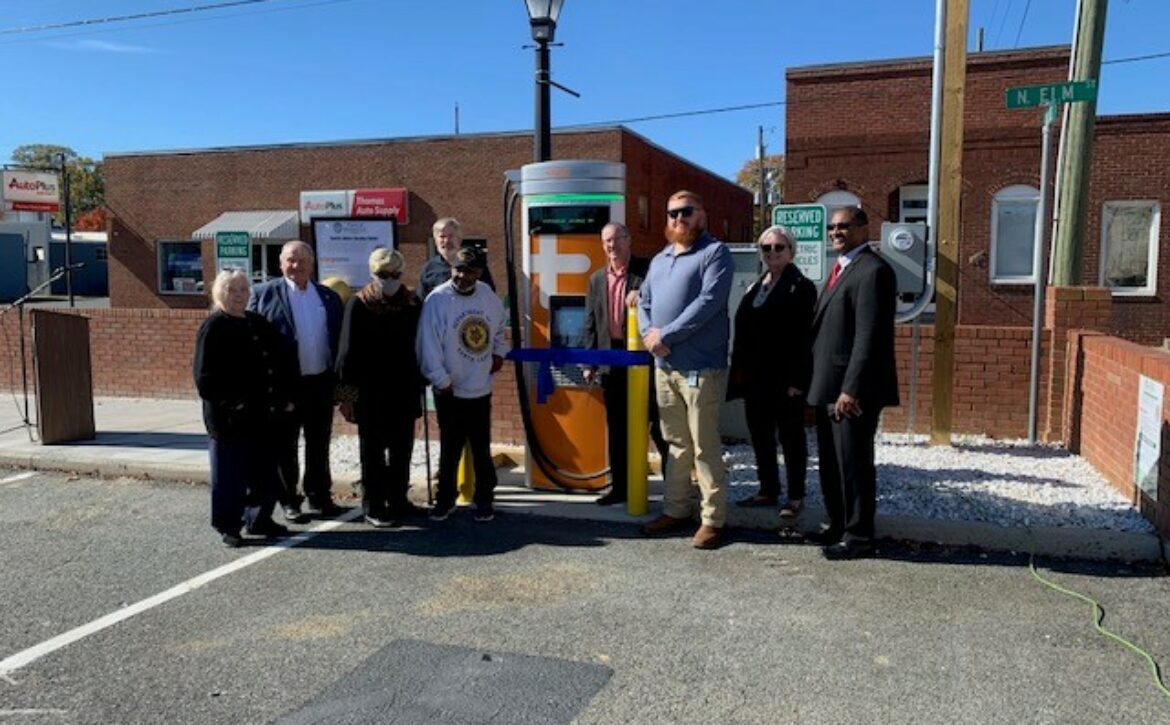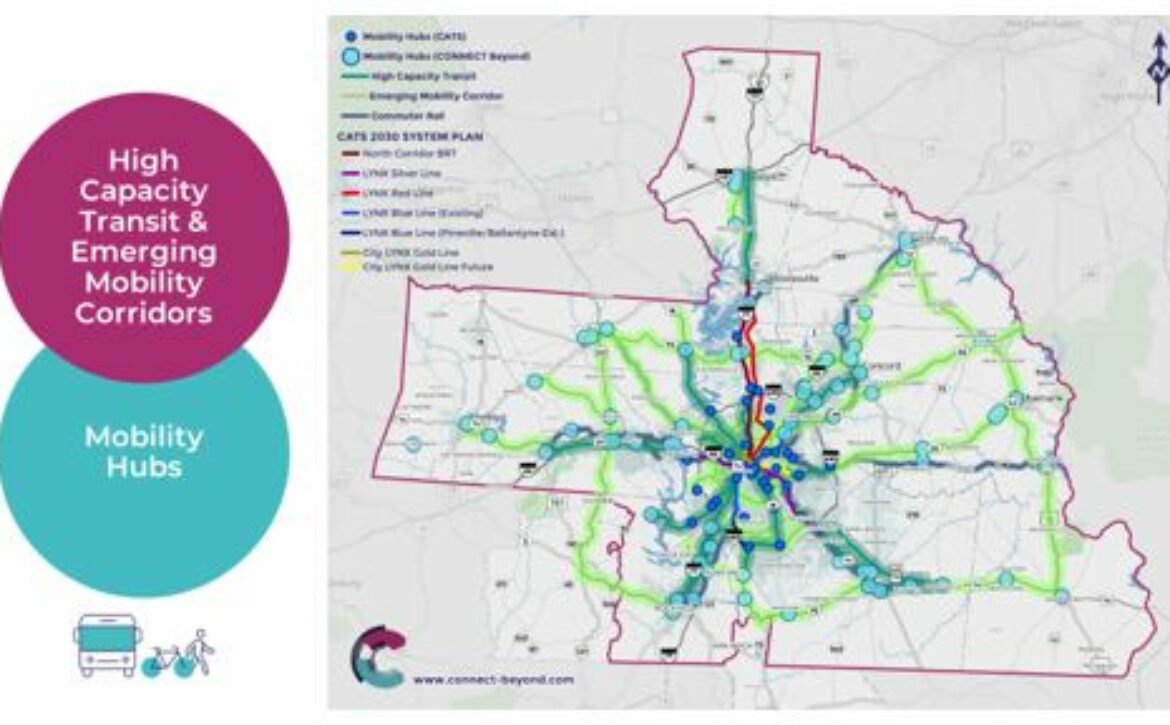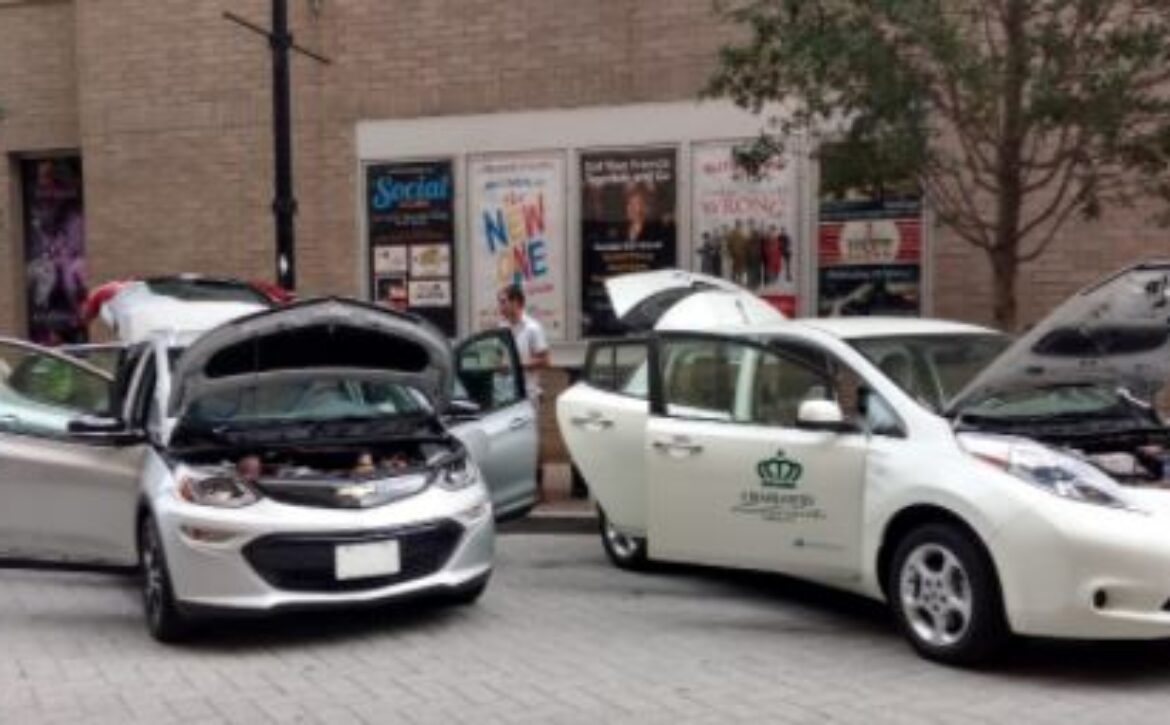Category: In The Press
Sustainable Fleet Technology Registration Now Open-Catch the Early Bird Special!
Registration is now open for the 6th annual Sustainable Fleet Technology Conference & Expo, August 30- September 1 in Durham, NC! Discover the latest and greatest in sustainable fleet technology, operations, and implementation along with other leading fleets and technology providers. Share industry ideas, trends, strategies and technologies that will improve efficiency and sustainability of fleet operations.
Early Bird Special!
Register by July 29th to save on your registration with early bird pricing!
Clean Cities Stakeholder Special
Clean Cities Stakeholders (from any coalition) are eligible for the Clean Cities Stakeholder rate, which gives a $50 discount off of regular price.
First PoleVolt EV Charging Station Now Open!
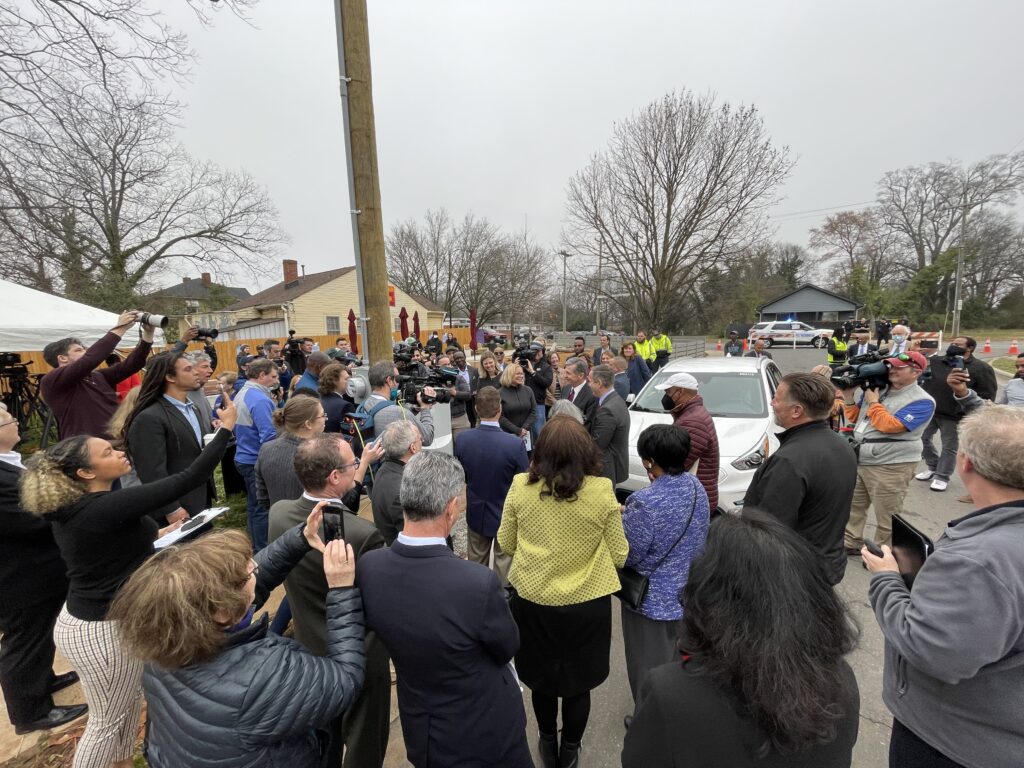
Governor Cooper and Mayor Lyles visited the unveiling of the new first of its kind in North Carolina PoleVolt charging station outside of the Ritz at Washington Heights Park. The curbside EV charging station uses existing streetlight infastructure to cut down the costs of installing an EV charging station by as much at 50 percent.
The Ritz at Washington Heights Park is located in the Historic West End. In 2018, several community leaders formed the Historic West End Green District. This initiative was designed to improve air quality, reduce emissions, and improve health. Making this location perfect for the free-to-use charing station.
The project has been brought to fruition by the partnership of Duke Energy, The City of Charlotte, Centralina Regional Council, and the UNC Charlotte EPIC center.
It is essential to support EV infrastructure to be ready when electric vehicles will become more affordable and accessible. Installing an EV charging station outside of the Ritz at Washington Heights Park gives locals access to charging that lack off-street parking availability for at home charging.
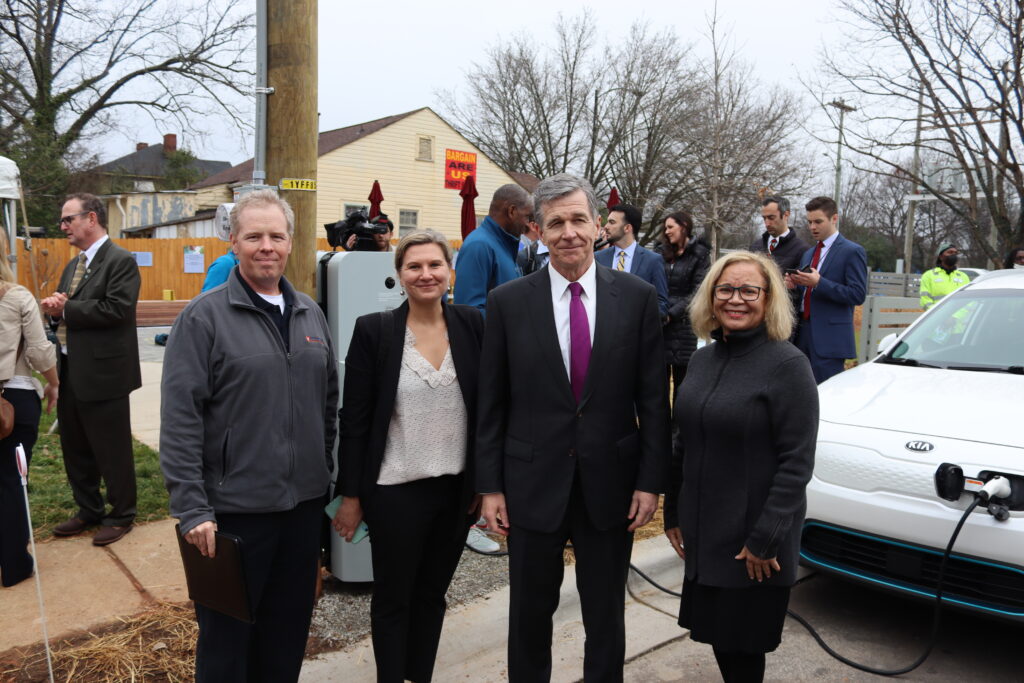
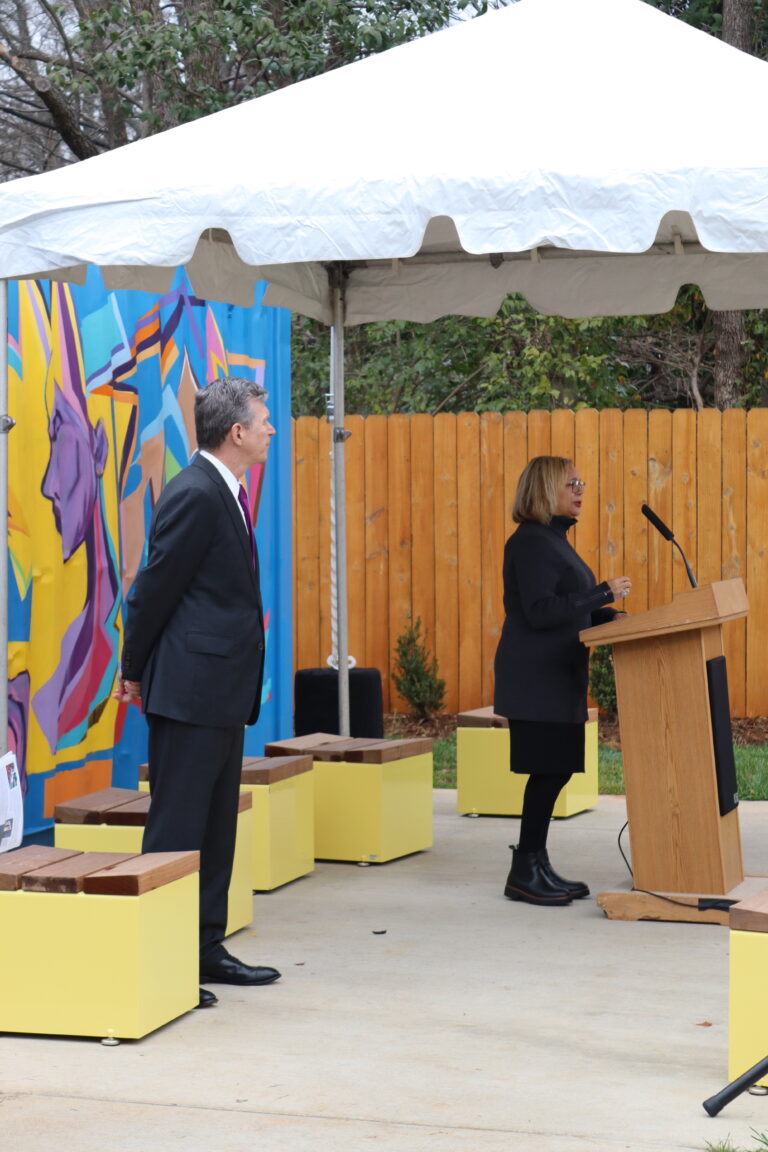
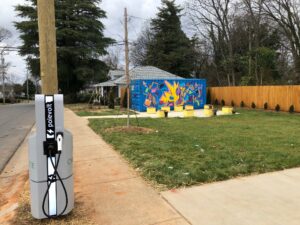
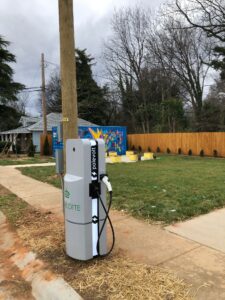
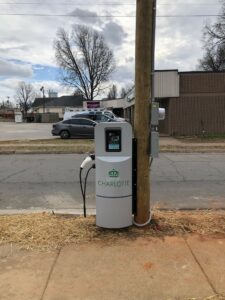
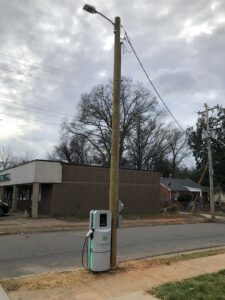
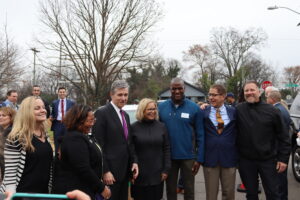
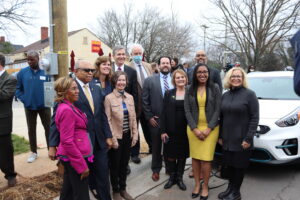
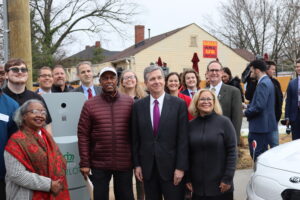
Region of Excellence Awards Clean Cities Category Now Open
The nomination period for the Centralina Region of Excellence Awards is here! The awards are opportunities to recognize and celebrate how local governments and partners expand opportunity and improve quality of life across our region. As partner organizations in the Centralina region, we encourage you to submit nominations for project, programs, or plans that were initiated or completed during the past calendar year.
The recipient of this award is a stakeholder organization that reduced the consumption of traditional transportation and fossil fuels by recognizing the environmental, economic and national security benefits. The awardee demonstrates leadership and excellence in clean transportation options, emerging mobility initiatives and alternative fuel activities. These activities include but are not limited to purchasing alternative fuel and/or fuel-efficient vehicles, using alternative fuels in their fleet, implementing idle reduction policies, improving fleet fuel economy, partnering with fuel providers to expand alternative fuel availability or generally supporting and participating current Centralina Clean Fuels Coalition/Clean Cities programs and priorities. The Clean Cities award has its own unique evaluation process and judges. Visit the Centralina Region of Excellence award page for more information!
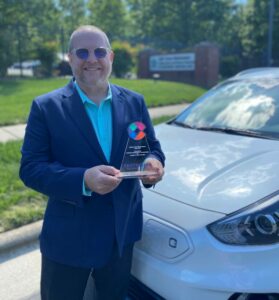
The 2021 Clean Cities Award was presented to the Charlotte Department of Transportation for implementing fleet improvements as part of the Strategic Energy Action Plan (SEAP). The SEAP listed several goals including participation in Duke Energy’s Integrated Resource Plan, the development of three new EV charging locations that will provide 13 additional chargers through infastructure installations, the introduction of an electric street sweeper and installing up to 874.4 kilowatts of solar capacity that would generate 1M kwh of zero-carbon electricity, a projected savings of approximately $3 million over the life of the solar units. Interested in learning more about the Charlotte DOT award? Contact csoriano@centralina.org to get in touch with Charlotte award contacts.
US DOT Bipartisan Infrastructure Law: NC Benefits
USDOT Bipartisan Infrastructure Law: NC Benefits
The U.S Department of Transportation released a fact sheet highlighting how the Bipartisan Infrastructure Law (BIL) will impact communities nationwide. The bill is geared towards improving transportation accessibility through repairing roads and bridges, increasing transit infrastructure, developing a country wide network of electric vehicle (EV) chargers, upgrading airports and more. Signed into effect by the Biden administration, it is noted as the country’s largest long-term investment in infrastructure in about a century, at a whopping $1.2 trillion.
North Carolina’s infrastructure has been at a deficit for years due to suffering from a lack of investment at a systemic level. The BIL will benefit North Carolina through a focus on climate change mitigation through infrastructure repairs with an emphasis on equity, resilience, and safety. The state is expected to receive roughly $7.7 billion dollars over the course of a five-year period in federal funding to tackle the 1,460 bridges and roughly 3,116 miles of highway in poor condition. $13 billion dollars is also being invested in the Fixing America’s Surface Transportation (FAST) Act that goes directly into improving roadway safety, a 29% increase in FAST Act funding levels. North Carolina local and tribal governments will be able to apply for direct funding to advance plans associated with reducing motor vehicle-related crashes and fatalities.
The infrastructure plan not only recognizes, but highlights the importance of improving sustainable transportation options for Americans. This is observed by the implementation of the first-ever nationwide EV charger network to provide convenient charging options across the country that accelerates progress toward EV usage while addressing the climate crisis and supporting domestic employment growth. North Carolina will also receive $920 million dollars of funding across 5 years focused on improving public transportation options; a 32% increase to the 2021 FAST Act transit funding amount.
Modernizing passenger rails to improve freight rail efficiency is another focus of the bill, in addition to improving airports through terminal development projects by addressing outdated infrastructure. This is being done in efforts to expand accessibility of disadvantaged groups. Local and State governments will have access to participate in competitive grant programs funded by the BIL that are expected to launch within a year or so of adoption. These include Infrastructure for Rebuilding America (TNFRA) grants with a $14 billion dollar expanded budget, Capital Investment Grants (CIG) with a $23 billion dollar expanded budget, the new Strengthening Mobility and Revolutionizing Transportation (SMART) grant program with a $1 billion dollar project fund, and many more.
With all these funding updates on the horizon, plan to follow adoption and implementation by seeing the current status of the bill here: As the bipartisan infrastructure bill passes, here’s what’s next for Biden’s economic plans.
Marshville Electric Vehicle Charger Now Open!
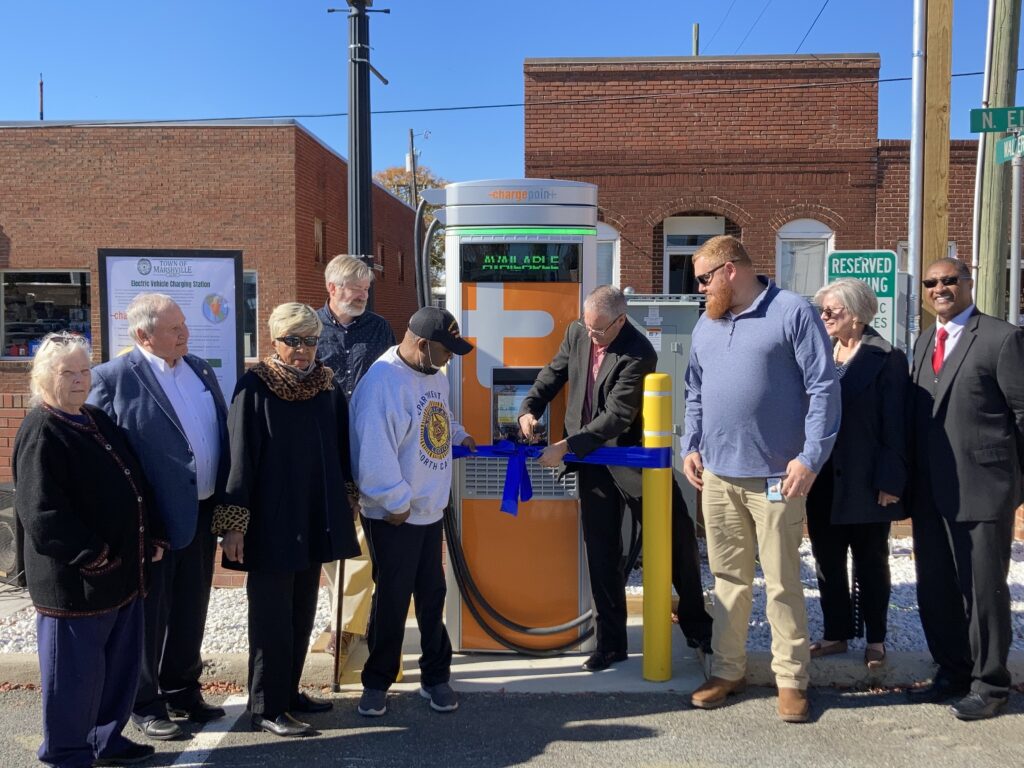
The Town of Marshville, in partnership with the Centralina Clean Fuels Coalition (CCFC), unveiled a new electric vehicle (EV) fast-charging station to the public on Monday, 11/15.
“This is an exciting time for Marshville, which is on the cusp of growth and development with the recent completion of the Monroe Bypass and increased interest from commercial and residential developers,” said Frank Deese, Town Manager of Marshville. “We greatly appreciate the Centralina Clean Fuels Coalition for assisting us with the grant process and helping make the EV charger a reality. Marshville is truly the diamond of Union County and with the EV charger, we are one step closer to establishing ourselves as a key destination in Union County.”
Made by ChargePoint, the EV charger is located at 119 N. Elm Street in Marshville. The cost to use the charger is $0.14 per KWH with one hour of free parking for the first hour and $1 per hour for parking after the first hour. The charger is free for Town of Marshville employees to use for Town vehicles.
In addition, the Town’s EV police vehicle-a modified Tesla 3, was on hand for folks to see. It was purchased in anticipation of the fast charger being installed.
“Our mission is to reduce petroleum dependence, improve air quality and expand alternative fuel use and technology, so we were excited for the opportunity to assist the Town of Marshville in applying for and receiving a grant to install a charging station for their downtown area,” said Carina Soriano, MPA, regional planner and co-coordinator with CCFC. “Not only are we helping improve transportation energy efficiency in Marshville, but are playing a role in helping with the Town’s economic development goal.”
The Centralina Clean Fuels Coalition – which is housed at Centralina Regional Council – helped the Town of Marshville with a grant application for NC VW Settlement funds that were received for an EV DC Fast charger. According to the North Carolina Volkswagen Settlement, Governor Roy Cooper has designated the N.C. Department of Environmental Quality (DEQ) to manage North Carolina’s share of the VW Settlement, an agreement between the German automaker and the U.S. Department of Justice on behalf of the U.S. Environmental Protection Agency (EPA). A Zero Emission Vehicle infrastructure program is one of the five programs that can receive VW Settlement funds.
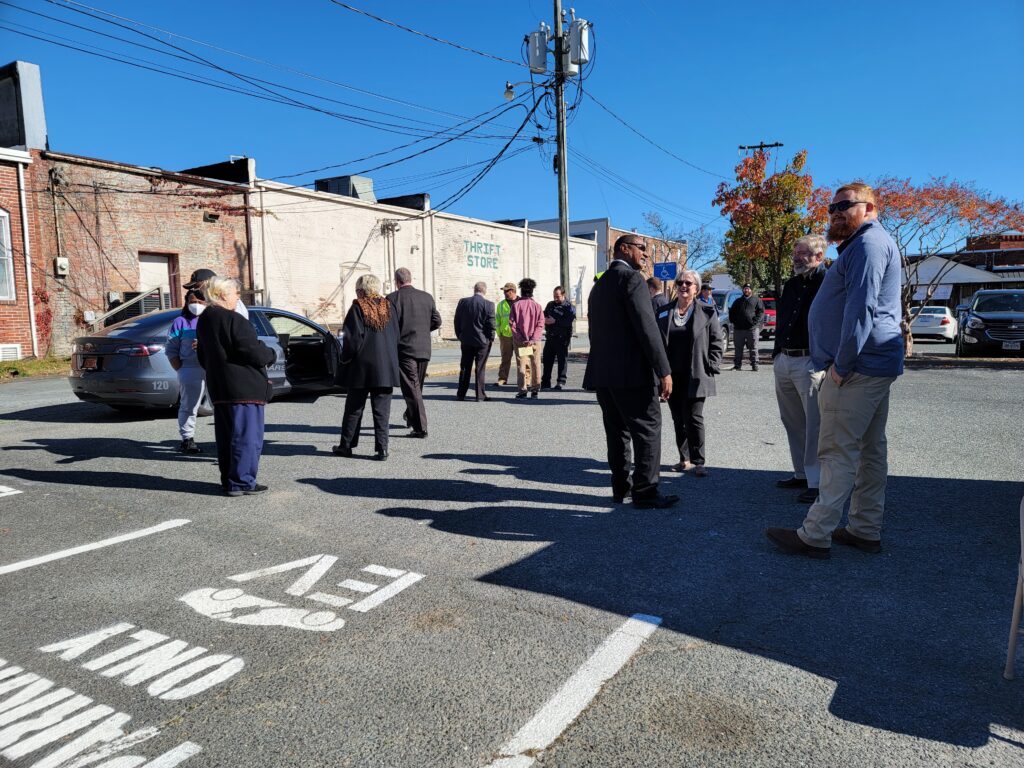
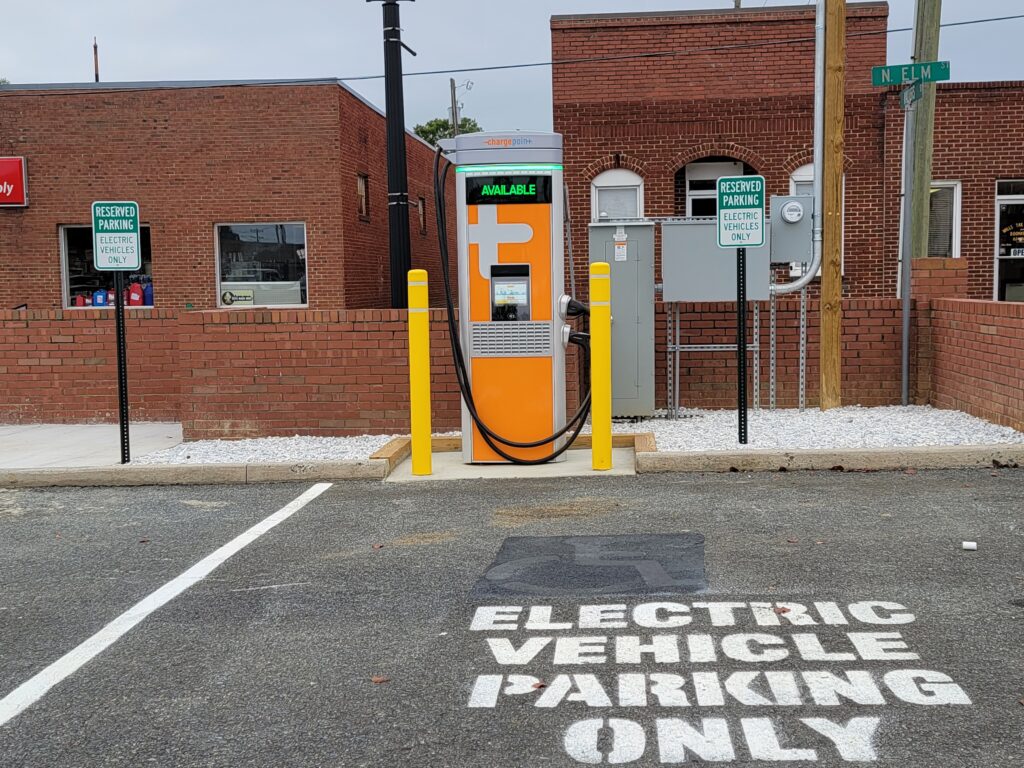
Centralina Clean Fuels Coordinator on Infrastructure Bill Latest
On Wednesday, 11/17, Jason Wager, Coordinator of the Centralina Clean Fuels Coalition was interviewed by Fox46’s Kaci Jones to talk about the large federal infrastructure bill President Biden has just signed into law. To watch the interview, press play on the viewer above.
CONNECT Beyond Plan Takes a Critical Step Forward
The wheels are in motion for the greater Charlotte region to implement a comprehensive transportation system. On October 13th, Centralina Regional Council’s (Centralina) Board of Delegates approved the CONNECT Beyond regional mobility plan. Mecklenburg County Commissioner Leigh Altman joined the Centralina board meeting to represent the Metropolitan Transit Commission (MTC), the policy board for the Charlotte Area Transit System (CATS). The MTC officially voted to endorse the CONNECT Beyond plan during its meeting on October 27th.
Centralina and the MTC are the project sponsors of this initiative, a first-of-its kind plan that serves as the blueprint for how to implement a robust, interconnected transportation network combining high-capacity transit lines, enhanced bus service and other innovative mobility solutions. The CONNECT Beyond regional mobility plan covers a diverse area, crossing the dashed lines that split the Charlotte region and includes 12 counties, two states, four Metropolitan Planning Organizations, one Rural Planning Organization and two state Departments of Transportation.
The plan provides the framework that will encourage economic growth, connected communities and equitable opportunities. Many transit options are currently focused on localized areas that leave gaps in transit on a regional level and the CONNECT Beyond recommendations will close these gaps and improve access by creating a total mobility network. “Over the past two decades, our region has experienced unprecedented growth and remained resilient through turbulent cycles. Access to safe, reliable, affordable and well-connected public transportation is critical so that everyone can benefit from this economic prosperity,” said Geraldine Gardner, Executive Director of Centralina.
The Path to CONNECT Beyond
Prior to launching CONNECT Beyond, Centralina led a two-year community engagement process to understand our region’s greatest transportation challenges and opportunities, engaging elected officials, planners, medical and educational institutions, transportation agencies, economic developers, employers and workforce leaders. The goal was to discover what mobility needs and transit-focused outcomes could be enhanced through regional coordination and what local interests could be addressed through improved transit mobility. The insights we gathered from this diverse set of perspectives and range of communities resulted in our understanding of mobility needs at the regional and individual community levels, allowing us to move forward with the next phase – defining the transit vision and developing an implementation plan.
Plan Development
Plan development was a stakeholder-driven process built on the work of existing transit and transportation plans across the study area. Centralina, the MTC and their regional partners gathered feedback from the community through surveys and listening sessions. The project team looked at best practices locally and across the country to find a way to seamlessly integrate dozens of different public transit systems to not only help residents get where they need to go, but also to ensure that our region remains economically competitive as we plan for an expected addition of 1.4 million people by 2045.
“The greater Charlotte area is a combination of diverse communities, each with unique needs and challenges, and the CONNECT Beyond plan honors those local needs while providing a bold and unified vision for our region that we can all rally behind,” said Jason Wager, Centralina Assistant Regional Planning Director, Clean Cities Coordinator, and CONNECT Beyond Project Manager. “This work will enliven downtowns, support the ability to connect people to jobs and transit systems across county lines, all while integrating the latest vehicle and mobility technologies into our local network.” The plan balances short-term and long-term tactics, offering solutions that can be implemented today in addition to bigger investments that will be made over time. The approach requires the work of local government planning and funding in addition to coordinated regional actions.
“Our region is poised for tremendous growth and opportunity in the coming years. We must have the vision and commitment to prepare for those changes in a way that ensures a great quality of life, a cleaner environment, and access to opportunity for all,” stated Commissioner Altman. A robust and connected transit system will make our region more attractive to relocating companies and will provide equitable opportunities for residents, allowing increased access to education, jobs, housing, healthcare and healthy food options. Plan recommendations were developed with the urban and rural end user in mind and incorporate public and private transit options including bus rapid transit, vanpools, mobility hubs, ridesharing and bike-sharing and more.
Plan Recommendations
CONNECT Beyond includes more than 150 recommendations that fit into the following five categories, known as Mobility Moves:
- Creating Mobility-Friendly Spaces: strategies to support vibrant, pedestrian-friendly communities that have convenient access to public transit and prepare communities for future transit investment.
- Expanding Mobility Choices: addresses how to support the how, when and where residents and visitors can travel, now and into the future.
- Strengthening Rural to Urban Connections: improving mobility and transportation choices for those living or working in rural communities, allowing better integration between our towns and shortening the time to travel between them.
- Building a Better Bus Network: implementing strategies to integrate existing bus systems and enhance coordination between transit service providers across our region, ultimately making it easier for riders to plan, pay for and complete their trips.
- Investing in Strategic Mobility Corridors: identifying and investing in corridors throughout the region where high-capacity transit lines, commuter rail and emerging mobility services could possibly be extended or newly constructed.
Mobility Moves are supported by key components such as livable centers and mobility hubs, places of connectivity where different travel options come together. These hubs can be thought of as all-in-one centers for bus boarding, rideshare designated pick-up locations, charging and docking stations for bikes, scooters and other private transport options and locations to comfortably wait in between trips.
“Time is our most incredible asset that each and every one of us have. And augmenting times becomes a determining factor in which mode of transportation we will choose as we are moving throughout the region,” said John Lewis, Chief Executive Officer of CATS. “This is an issue of competitiveness. Being able to give individuals back the most amount of time in their commute and allows them more time pursuing business ventures, spending time with family and enhancing quality of life. And much of that is tied to our transportation system and our ability to connect.”
What’s Next
The next steps will entail Centralina and MTC working with transportation planning organizations, counties and municipalities within the project area to educate residents, facilitate cross-county coordination and secure resources to support early implementation priorities. These activities will broaden project partnership opportunities and help local governments customize mobility plan implementation for their communities.
“We are excited to begin rolling out the plan and working with local entities in the region to customize implementation and ensure mobility solutions for everyone. CONNECT Beyond is our north star in meeting the needs of our growing region.” – Geraldine Gardner
For more information about the CONNECT Beyond mobility project and plan visit: https://centralina.org/regional-collaboration/regional-transit/
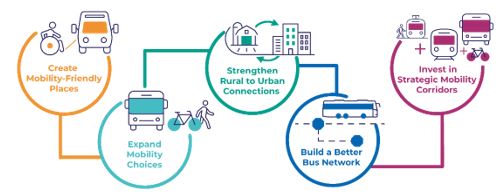
The City of Charlotte’s Road to Zero Emissions
